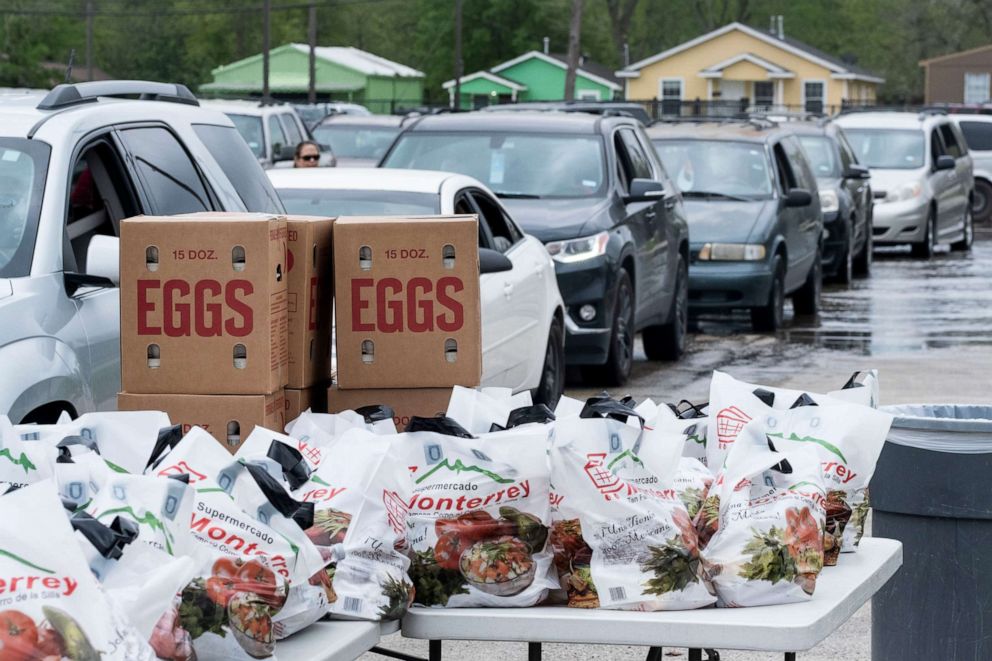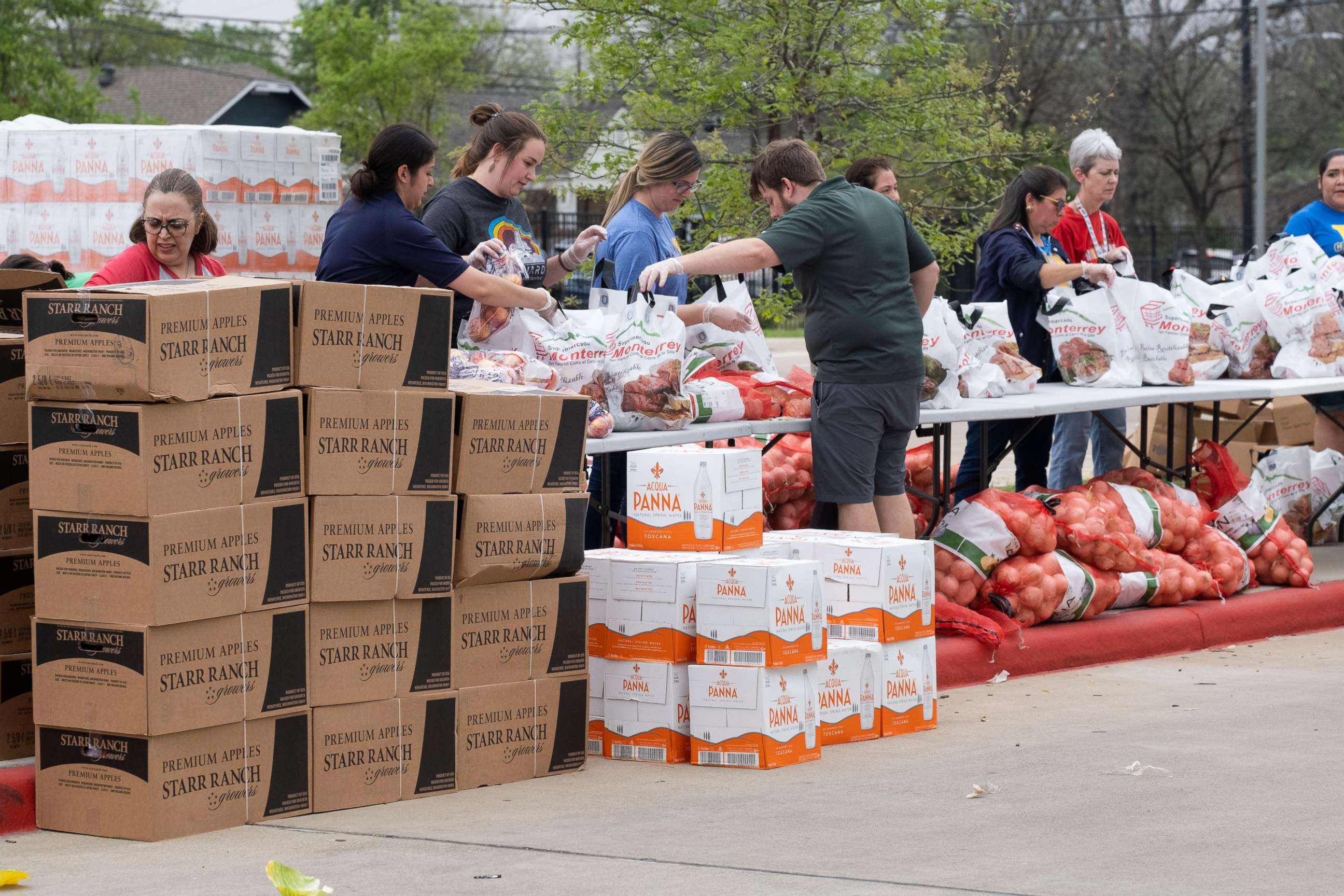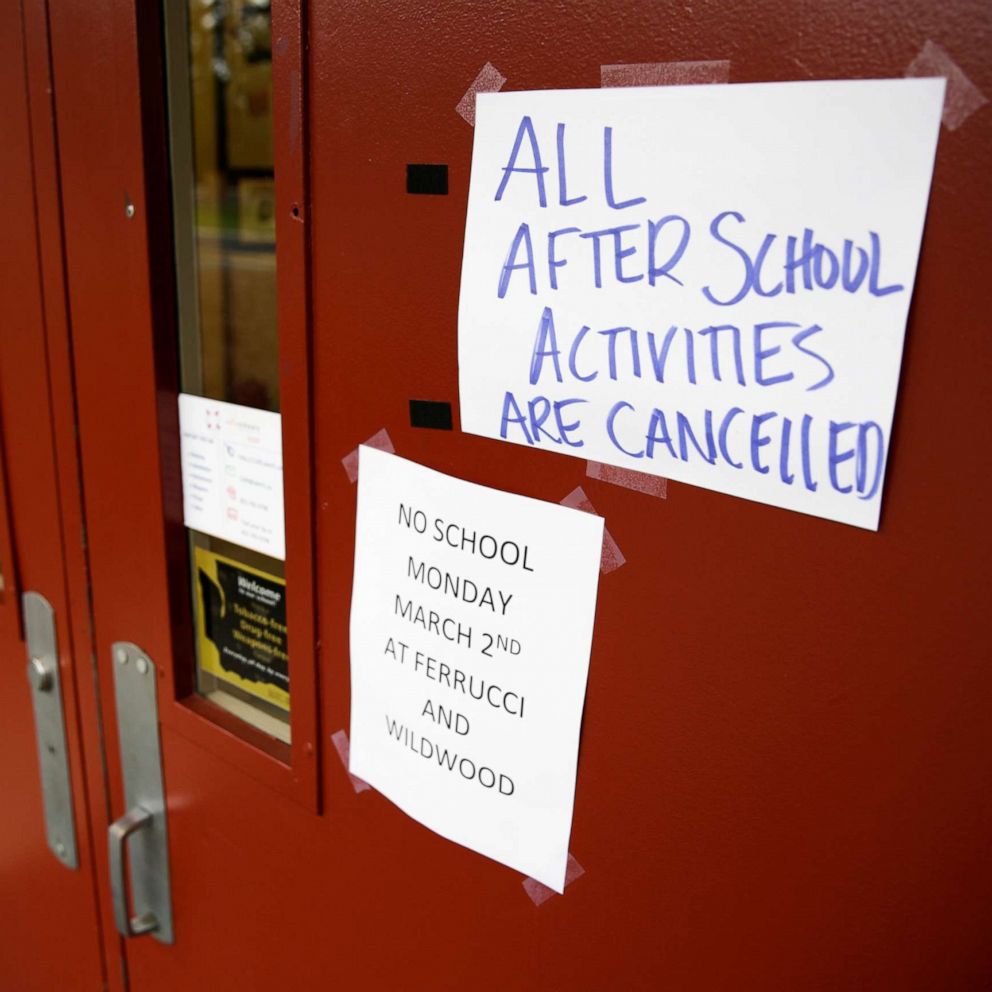USDA relaxes requirements for parents to pick up schools meals, as some are still being turned away
School officials say they need clarity on how often they can provide meals.
After a push from states and advocates, the U.S. Department of Agriculture has waived a requirement that children have to be physically present with their parents to pick up meals at closed schools around the country.
But in at least one state, schools were still turning away parents who showed up on Thursday to pick up meals without their children.
Tune into ABC at 1 p.m. ET and ABC News Live at 4 p.m. ET every weekday for special coverage of the novel coronavirus with the full ABC News team, including the latest news, context and analysis.
The USDA waiver says that schools can provide meals to parents or guardians to bring home to their children but that states must have a process to verify that meals are distributed only to eligible children and that families aren’t picking up duplicate meals for any student.
The Texas Department of Agriculture announced the waiver was approved and it was reported in local news outlets but school officials said they told districts separately they could not give out meals until the department creates guidance for accountability for those handouts.
Irma Munoz, chief operating officer at IDEA Public Schools, a network of charter schools in Texas and Louisiana, said that because of the confusion their schools in Texas have been turning away parents who showed up without their children.
"Right now it’s stuck in this bureaucratic limbo and we’re the ones having to respond to parents," Munoz told ABC News.
The Texas Department of Agriculture said they expect to make progress on issuing guidance to clarify the requirements on Thursday night but they still encourage schools to hand out meals until it's finalized, just that there’s no guarantee they would be reimbursed for those meals.

"We are not saying they should not provide the meals. We want children to be fed that need to be fed. That is the first and foremost priority," spokesman Mark Loeffler said in an emailed statement. "We have said this is not the time for arguing or holding back meals. Provide the meals. The plan will be in place as soon as possible."
A spokeswoman for the Food and Nutrition Service confirmed that the waiver goes into effect immediately and applies to all states that elect to use it.
IDEA Public Schools have served more than 170,000 meals in less than a week to students and children in the surrounding community, Munoz said, but they still don’t know if they’ll be reimbursed. 85 percent of the 53,000 students they serve qualify for free and reduced lunch and rely on school for at least two of their meals per day.
She said they decided to move forward with providing meals without confirmation of how regulations would be applied but that "it would be an incredibly big financial hit" if they’re not reimbursed for all the food they’re providing.
Hundreds of school districts around the country are closed for weeks, months or indefinitely, forcing them to adapt quickly to provide meals for students whose main source of healthy food was from their school cafeteria. School officials have also transitioned their summer meal programs into options to deliver meals by bus or offer curbside pickup but still have to figure out how to comply with state and federal regulations in an unprecedented situation.
Virginia Del. Danica Roem, who represents western Prince William County and the city of Manassas Park, took it upon herself to bring groceries to constituents who were unable to pick up food from schools because of the rule.
Roem paid for the groceries with her own money, she said, but considers it a small price compared to the hurdles facing some families in her district.
"They have immunocompromised children who shouldn't, you know, [be scared]," she told ABC News. "They shouldn't be having panic attacks, they shouldn't be worrying about whether they're going to eat, or whether their health is going to be at stake ... from going outside."
Back in Texas, Munoz said that in addition to the confusion over the requirement a child be present her schools are trying to get clarity on how many meals they can provide.
"We typically provide three meals at school breakfast, lunch and supper -- which is the last meal that our kids get before they leave school," Munoz said. "And right now we are unclear about our ability to provide supper, but more specifically, our ability to provide supper bundled with breakfast and lunch."
While it may not seem "so big of a deal," she said it is more of a hassle for parents to have to pick up breakfast and lunch in the morning, and then have to come back in the afternoon "to pick up supper."
USDA guidance on providing meals through summer food service programs -- what schools are using during the COVID-19 emergency -- said they will reimburse schools for two meals, or a meal and a snack, for every day that the school is closed.
States will also allow schools to give parent’s permission to get up to a week of meals at once; but USDA will still only reimburse the school for two meals at a time, according to officials.

"Those types of flexibilities in these times, given school closures, given that there's just scarcity of food among nonprofit organizations that do traditional, you know, feeding for at-risk populations," Munoz said. "It's just an added burden that we don't need and our families don't need."
The Agriculture Department said it’s "working to be as flexible as possible" to get food out during the national emergency and has waived some requirements to make it easier to provide meals outside a traditional school setting, such as rules that students must eat the meals on site, and allowing schools to deliver more than one meal at once and outside normal meal times.
States and anti-hunger advocates are pushing USDA to lift additional requirements, including a rule that 50% of students must be eligible for free and reduced lunch for schools in some states to provide meals to any children in the community.
Food banks are also seeing sharp increases in demand for food assistance as millions more people are out of work and looking for the best way to help while keeping up with demand and protecting their own staff.
Andrew Cheyne, director of government affairs with the California Association of Food Banks, said they worked with the state to allow changes to limit contact between staff and community members, like allowing staff to sign people in and providing pre-packaged food, as well as allowing food banks to distribute at schools so families can receive more aid.
"A simple action like that is actually key to achieving our social distance," he said.
Congress has also provided emergency funding for food assistance programs like the Supplemental Nutrition Assistance Program -- more commonly known as food stamps -- and The Emergency Food Assistance Program.
ABC News’ Alisa Wiersema contributed to this report.






